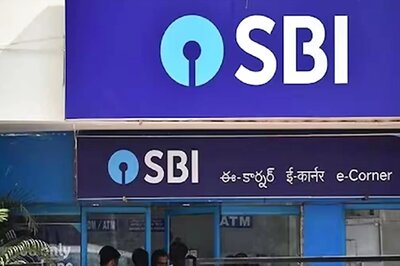
views
Bollywood – which is often erroneously used as a synonym for Indian cinema – has a huge fan following. Its song and dance dramas, replete with glam dolls costumed in satin and silks as well as hunky he-men bare-chested and bold, are adored.
Yet Hindi films make up just 8 per cent of the industry's turnover outside India, says a report in The Hindu – which,in turn, is based on the findings of a German data analytical firm, Tecxipio. The reason is obvious.
A lot of Bollywood cinema is pirated with impunity. And the two most important market for such illegal venture are Tanzania and Ireland! Tecxipio says that a study of 100 top Hindi movies undertaken between 2013 and 2017 found that the number of unlawful downloads grew by 250 per cent in Tanzania and by 100 per cent in Ireland.
One can digest the fact that a relatively poor country like Tanzania embracing piracy, but a rich nation like Ireland would also walk into this crime seems incredulous.
The Hindu article added: “Macedonia, Germany, Bosnia, Herzegovina, and Turkey were the other European countries with growing audiences for Bollywood films, while Mozambique, Zimbabwe, Botswana, South Africa, Cameroon, Kenya, Nigeria, Uganda, Ghana, and Morocco were among the African countries developing into hubs for Hindi movie downloads, the report observed. Surprisingly, Canada recorded declining numbers, while file-sharers in the U.S. displayed increasing demand for Bollywood content, with nearly 16% growth in the same 4-year period.
“As for the films themselves, Sanjay Leela Bhansali’s Padmaavat topped Tecxipio’s list of the most pirated Hindi movie of 2018. The piracy list is based on the number of file-sharers who downloaded and shared the respective films in P2P (peer to peer) networks between January 1, 2018 and June 30, 2018. “)
One of the most important factors for overseas piracy is unavailability. I remember talking to girls and boys in Marrakech (Morocco) about Hindi cinema. They all loved it, but were dismayed by the fact that there was no local theatrical distribution. Which meant that they had to go to the souk (market) to get hold of pirated discs of top Bollywood blockbusters.
One of India's most respected auteurs, Adoor Gopalakrishnan, once told me that he would rather see his movies being pirated and accessible to the people in Chennai than them not being able to watch his work at all. Sadly, Adoor's films are hardly ever released in Chennai or elsewhere in Tamil Nadu. Why just Adoor, even Girish Kasaravalli's extraordinarily brilliant cinema is not shown in Tamil Nadu. No Bengali cinema ever finds screen space in Chennai, which boasts of a huge population from Bengal. Yet, there was a time when some Chennai cinemas showed Bengali movies on Sunday mornings.
There are two reasons for this: language chauvinism and inadequate theatres, and with a large number of Tamil films popping out of the cans every month, there is little screen space for other languages.
The result of all this is the rampant rise in the number of Long John Silvers! India is undoubtedly one of the most notorious hubs where movies are converted into handy disks and sold in their thousands. Often such illegal copying takes place in villages and small towns after the last show is over, and camcorders are used to capture the fleeting images as projectors are clandestinely run.
Nobody, really nobody can tell me the actual amount that is lost through this illegal venture. There are hundreds of guesses. One avers that piracy in Indian films alone is now a whopping US$250-million market. It is an industry employing thousands of people.
A Northbridge Capital Asia report contends that the Indian movie industry, which produces around 2000 films in many languages every year, loses 14 percent of its revenue to video piracy. This can be an underestimated figure, for I am sure that the widespread practice of unlawful downloads from the internet has not been taken into account.
Unfortunately, many Indian movies are not available on discs even months after they hit the theatres – giving enough reason for piracy to flourish and flourish freely. And if a man in Tamil Nadu cannot watch a Bengali film in a theatre, he may be tempted to walk up to a Long John Silver to find himself a fix.
If this is the case within India, imagine the plight in Tanzania or Ireland. With hardly any theatrical release of Bollywood pictures there, illegal downloads or pirated discs may be the only option for someone who wants to see a Salman Khan or Abhay Deol or Priyanka Chopra or Shraddha Kapoor. Can you really blame an expat Indian or even a local when he opts for the illegal and the unlawful?
The only way out of all this is to make sure that films are out on discs or on the internet a couple of weeks after they open in the cinemas. With the multiplex system now in place even in small towns, a film is marred or made in the first weekend. So, why not make the best use of this by selling legal discs sooner rather than later. This will certainly curb piracy, and to an even greater degree if legitimate discs are priced moderately.
I know that there will be opposition for this. When Tamil superstar Kamal Haasan wanted to release his Viswaroopam on the Direct-to-Home platform and in the cinemas simultaneously, huge protests stopped him.
But unless the movie fraternity comes together to fight such opposition and check piracy, Long John Silvers will keep singing “Yo-ho-ho ,a bottle of rum” . And merrily so.
(Gautaman Bhaskaran is an author, commentator and movie critic who may be emailed at [email protected])




















Comments
0 comment